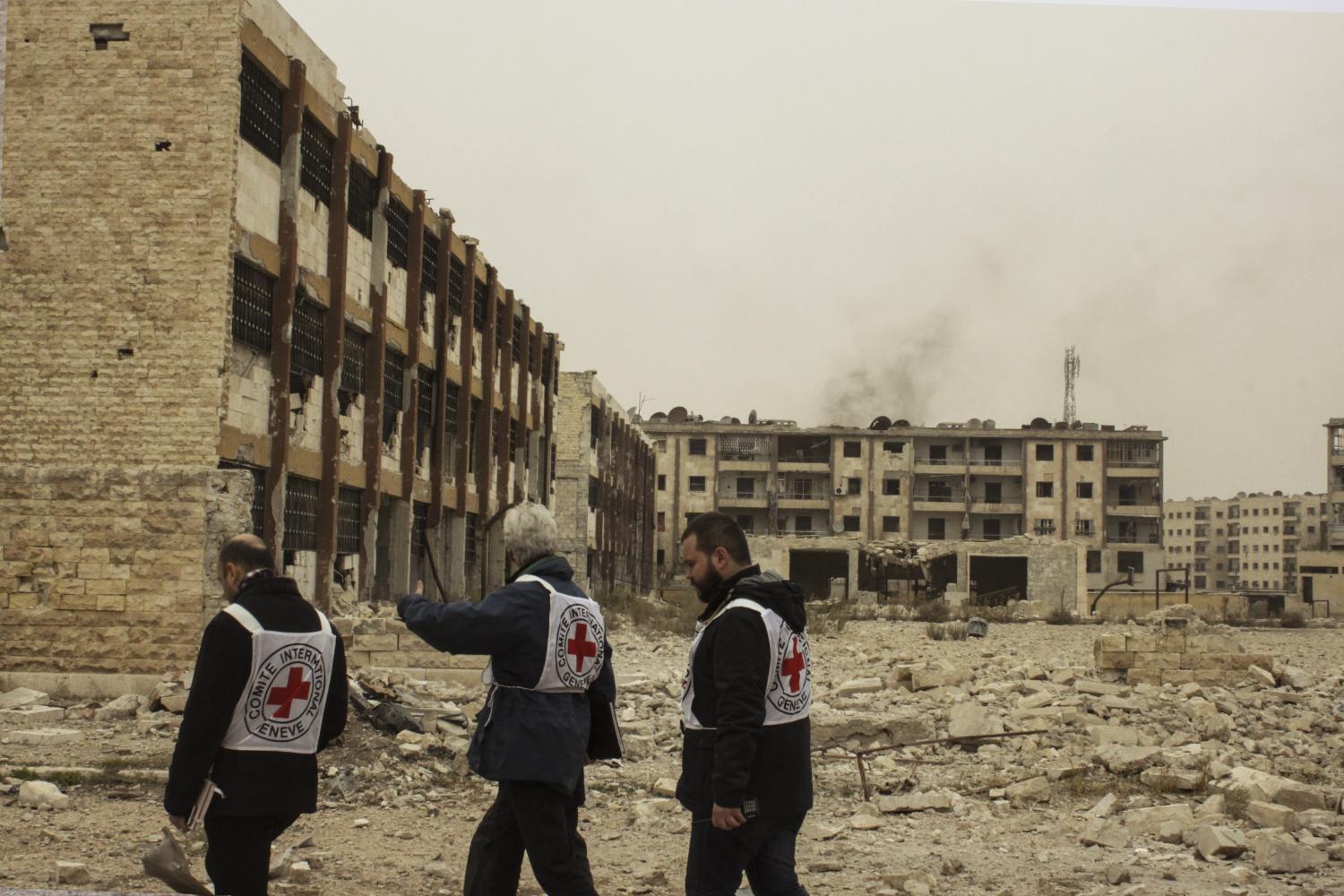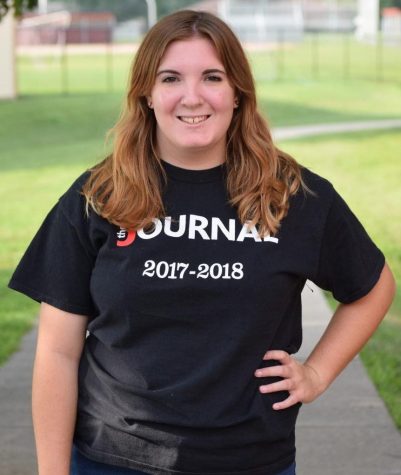Escaping the Syrian conflict
Conflict between terrorists and rebels leads many to flee
Three International Committee Red Cross members evaluate the rubble of a conflict-affected area in Syria. They were checking the living conditions in order to determine when civilians can live there again. Despite taking no part, millions of innocent civilians face the consequences of the war, with hundreds of thousands of casualties, and many more seeking safety and becoming refugees.
May 19, 2017
A deadly mushroom cloud appeared early in the morning on April 4 over Khan Sheikhoun, Syria. The deadly chemical, sarin, caused seizures, foaming of the mouth and severe injuries. This out lash was just one of the attacks the Syrian government has made against the citizens during its civil war.
The violent war is between the Syrian government and rebel groups who hope to drive those government forces out, and caught in the middle are millions of innocent civilians. Hundreds of thousands have died, and many more have sought safety and integrated into the refugee process.
Leading the government forces is President Bashar al-Assad. During the past six years while the war has been going on, allegations have been made accusing him of many atrocities, including the chemical attack on April 4.
Over 400,000 people have been killed during the war from bombs, chemicals and shootings. The government began kidnapping, raping and torturing activists, many small children, who were in favor of overthrowing them. Authorities often left the damaged bodies on the sides of the streets.
Marie-Claire Feghali, the Regional Communications Manager for the Middle East ICRC (International Committee of the Red Cross), along with many others with the ICRC have first hand experience of the war in Syria.
Feghali says that not only the activists are victims in the conflict. Innocent civilians, including children, have also been targeted.
“A few kids were going to a truck to buy potato chips, and then the truck blew. Then they were all dead,” Feghali said in a Skype interview with The Journal.
The summer of 2012 proved to be devastating to Aleppo. The city was essentially a battleground starting in July. The people were all in dire need of basic necessities such medicine and water.
“Some of (the citizens) don’t have food. Some of them haven’t eaten decent food in months- sometimes in years,” Feghali said.
The conflict has forced people out of their own homes. Just outside of the big cities in Syria lie large refugee camps made to be safer environments outside of the war zone.
“You hear people saying ‘Let’s get them back to their villages,’ but there are no villages left. There are no houses left. There are no families left,” Feghali said.
Exodus is a local organization in Indianapolis that’s mission is to “serve the resettlement needs of refugees and other displaced people fleeing persecution, injustice, and war by welcoming them to Indiana,” according to their website.
The organization has different sections all specific towards helping the families, including a Language Culture Orientation and readiness for employment class, which was cut after President Donald Trump’s first executive order on immigration.
The section’s instructor, Emily Bricker, traveled to and from the airport as part of her commitment to Exodus. She was one of the first faces the refugees saw when arriving in the U.S.
A refugee is someone who has been forced to flee due to unfit or unsafe living conditions, and there are currently 4.8 million Syrian refugees. Once an individual decides to apply to become a refugee, they must meet certain criteria to prove they are facing persecution and injustice.
Bricker explained the process of becoming a refugee into four basic steps. After applying, he or she has the choice to either go back to their home country, stay in the second country they resettled to, or resettle to a third country, like the U.S.
“There is war in their city because it’s too dangerous. That family will have to go to a 2nd country,” Bricker said.
Often times this process can become very lengthy. For some applicants it can take only a few months and for others it can take years.
When Trump signed an executive order preventing the influx of many Middle Eastern countries for 120 days on Jan. 27, it was overturned by a Washington state district court judge on Feb. 3 due to its unconstitutionality. Bricker says Trump’s actions on immigration did not represent what she saw, as many refugees pose no threat.
“One big thing Trump was saying is that “We don’t know who these people are”, but really that’s not true,” Bricker said. “We know a lot about them. We know a lot about these people who have come.”



